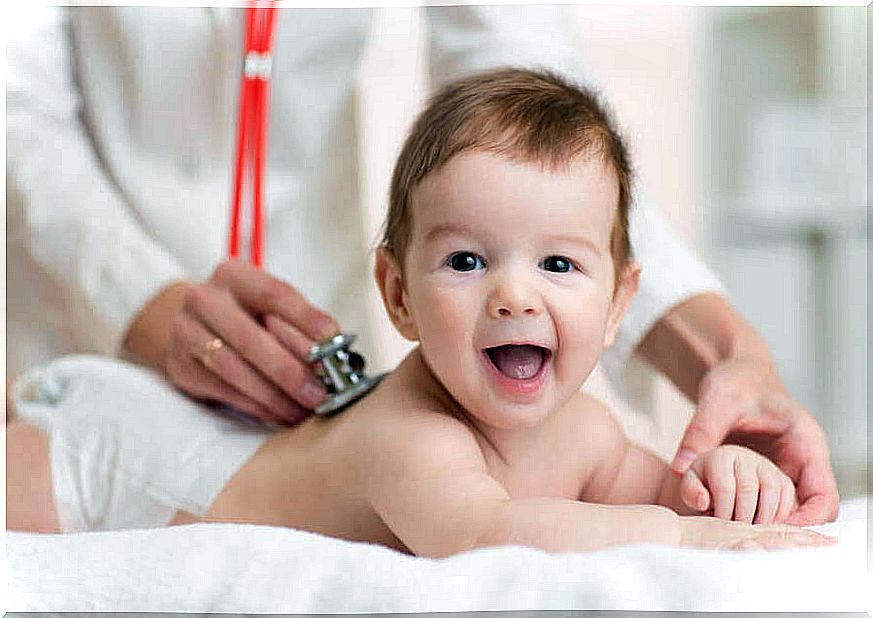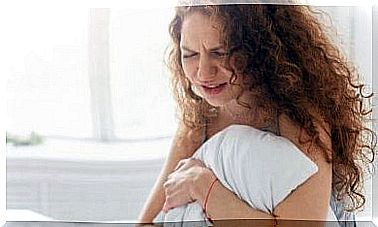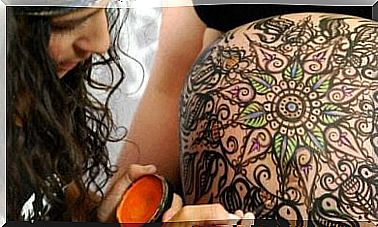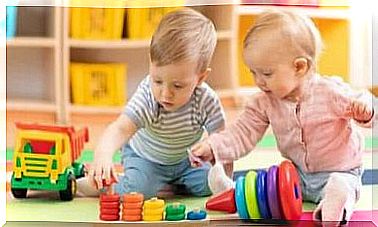Rotavirus: What It Is, Symptoms And Treatment

What exactly is rotavirus? This highly contagious disease is associated with an infection called gastroenteritis, or gastrointestinal catarrh, and comes with symptoms such as diarrhea, dehydration, vomiting and fever.
Rotavirus is very common, and in general it has no serious consequences for children. But in many less developed parts of the world, the mortality rate from this disease is about 400,000 children per year.
Below we give you detailed information about rotavirus so that you know how it is transmitted and how to prevent it.
What is rotavirus?
Rotavirus is a genus of double-stranded RNA viruses (dsRNAs) in the family Reoviridae. This virus affects the gastrointestinal tract of newborns, nursing babies and other mammalian pups.
This highly contagious virus is classified into six groups, identified by letters that break up the VP6 type to which they belong. Groups A, B and C are the ones we can see in humans. Type A is the one that causes the most intense symptoms in children.
The virus enters the body via oral contact with infectious agents in feces. It is common, for example, in preschools where these infectious agents are often spread around on different surfaces. It is estimated that most children of infant and preschool age get it at least once before they are 5 years old.

How is rotavirus transmitted?
As I said, rotavirus is spread by contact with infectious agents from feces. The particles can be in the air we breathe or we can get them in us through contact with the hands when we touch an infected surface. It includes toys.
Rotavirus is quite stable in our environment, so trying to eradicate it by cleaning is largely pointless. The virus can survive even in hygienic and clean spaces.
Once the virus has entered the body, the incubation period is about two days. Gastroenteritis (infantile diarrhea) may last for 3 to 8 days.
What are the symptoms?
Symptoms can vary from person to person, and everyone can experience them with greater or lesser intensity. But the most common symptoms are:
- Diarrhea
- Fever
- Vomiting
- Stomach ache
- Some may experience difficulty breathing
- In extreme cases with a high fever, the child may have seizures
- Dehydration. Children show signs of dehydration by appearing nervous or upset, thirsty, hollow-eyed, and the child will urinate very little and have dry mucous membranes.

It is worth noting that rotavirus is easily confused with norovirus. This is a similar intestinal infection, but it has less severe symptoms. In any case, the only way to diagnose the virus with certainty is a stool test.
Treatment of rotavirus
Rotavirus treatment varies depending on your pediatrician’s recommendations and the severity of your child’s course of illness. The main recommendation is to ensure that the child does not become dehydrated by letting him drink beverages containing salt and sugar, in order to maintain electrolyte levels.
In extreme cases, especially for very young children and infants, fluids can be given intravenously or through a tube in the nose.
It is also recommended that you give the baby food after several hours of fluid – whether it is a breastfeeding baby or a baby who can eat a soft or hard food. Try fruit slices, yogurt and cereals, depending on the situation.
Vaccination
Vaccination is another option to fight rotavirus. There are two types of vaccines, mainly intended for breastfeeding children. They are very easy to administer, and consist of only a small dose given orally.
Their use is recommended for children under 2 years of age attending preschool, as they are at greater risk of contracting the disease given that they are in constant contact with other children and share toys and other objects.
As a final recommendation, always consult your doctor if you notice any of these symptoms in your child. This way, your doctor can take a stool test and make a diagnosis.









